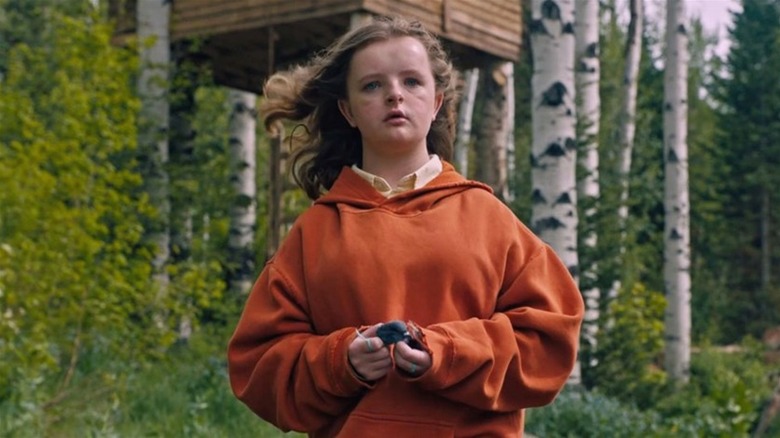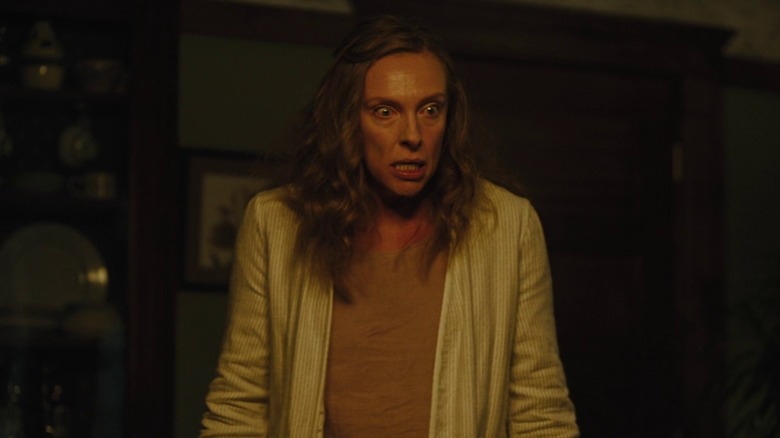One Deadly Scene In Hereditary Laid The Groundwork For The Entire Horror Movie
A particular scene in Ari Aster's "Hereditary," which unfolds around the 33-minute mark, is designed to shock, terrify, and subvert expectations. You know exactly which scene I'm talking about: when Peter (Alex Wolff) drives a sick Charlie (Milly Shapiro) to the hospital after the latter experiences a peanut allergy and sticks her head out of the moving car to breathe better. Before you know it, a deer blocks the road, and Peter swerves, causing Charlie's head to hit a telephone pole, which leads to instant decapitation. The utter shock of witnessing such a gruesome death looms over everything that happens next, tinting "Hereditary" as visceral horror where the bonds of family get twisted into something unrecognizably frightening.
While Charlie's death is the first tragedy that completely breaks the Grahams, the power of hindsight makes it clear that the seeds of evil were sown way before her death, and that her demise was one among many orchestrations by the cult worshipping King Paimon. Symbols that initially seemed vaguely ominous emerge as clues placed in plain sight, such as the demonic summoning sigil on the telephone pole, which also crops up in Annie's (Toni Collette) miniature recreation of the supposed accident. Although Aster successfully weaves an intricate web of conspiracy that culminates in a heartbreaking case of forced possession, spurned on by grief and repressed, complex feelings about motherhood, the foundation for the film lies in two pivotal scenes, as revealed by the director in a Reddit AMA. Here's what Aster had to say.
The heart of Aster's Hereditary lies in cycles of grief and loss
During the AMA, a Redditor asked Aster about Charlie's death, enquiring how early on in the writing process the director fleshed out the traumatizing scene and decided which visual aspects to highlight. Aster revealed that "Charlie's head being knocked off" was one of the first images that came to him before he wrote "Hereditary:"
"The first images that came to me (before writing) were Charlie's head being knocked off by the telephone pole and Annie levitating while sawing off her own head (the concept of a mother so destroyed by what happened to her child that she has to do it to herself). I built the movie around that and the other."
The correlation between the two scenes has been explicitly explained by Aster here, and this foundational sentiment haunts the film from start to finish. Charlie's grandmother had always intended to house Paimon within her, but as the demon coveted a male host, the tragedies that befell the Grahams were orchestrated by the cult to gear towards a specific end. Annie's grief, and her partial awareness of her mother's intentions, drove her to extreme ends — even when she is possessed, her hands cannot stop from sawing her own head off, in imitation of what happened to her child. This, mixed with a repressed disdain for her firstborn (whom she simultaneously loves and abhors), lends to a cycle of emotional abuse and dysfunctional dynamics that end up working in favor of the cult.
Aster uses similarly shocking imagery to drive these layered themes home, such as the unforgettable final shot of "Peter" staring vacantly ahead, his telltale mouth-click affirming that evil is here to stay, and that the bonds of family were not enough to banish it.

